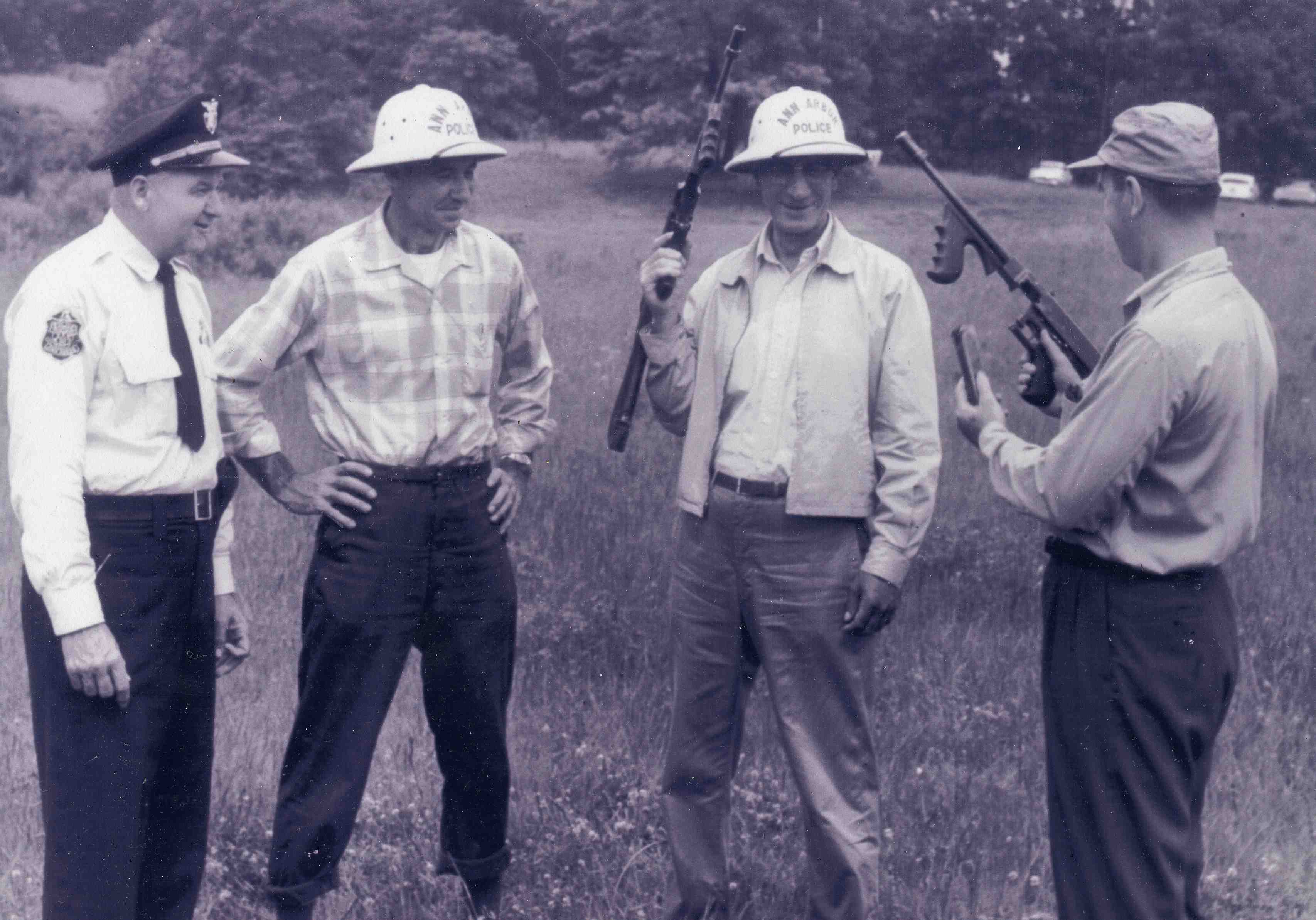Einstein's Role in Developing the Atomic Bomb
The true history of Einstein's role in developing the atomic bomb The legendary physicist urged the U.S. to build the devastating weapon during World War II—and was haunted by the consequences. “I did not see any other way out.”
Albert Einstein is perhaps most famous for introducing the world to the equation E=mc2. In essence, he discovered that energy and mass are interchangeable, setting the stage for nuclear power—and atomic weapons.
His part in the drama of nuclear war may have ended there if not for a simple refrigerator.
In the 1920s, while living in Berlin, the physicist collaborated with Hungarian graduate assistant Leo Szilárd to develop and patent an energy-efficient fridge. While their design never went to market, the duo’s work ultimately embroiled Einstein—an avowed pacifist—in the race to create an atomic bomb during World War II.
Einstein would go on to argue vehemently to ban nuclear weapons worldwide in his later life, as he struggled with the deadly consequences of his scientific creation.
“His brilliance was also his downfall,” says National Geographic Explorer Ari Beser. “The revolution that came with the splitting of the atom requires a moral one as well.”
THE LETTER THAT LED TO THE ATOMIC BOMB Albert Einstein becomes a United States citizen and faces a moral dilemma in service to his new country.
Einstein's Letter to Roosevelt
Even after Szilárd and Einstein ended their partnership over appliances, the two scientists stayed in touch.
In 1933, the same year Adolf Hitler became chancellor of Germany, Szilárd discovered the nuclear chain reaction—the process that unleashes the energy locked in atoms to create enormous explosions. And by 1939, he had became convinced that German scientists might be using current scientific developments to develop an atomic weapon.
So he approached his one-time colleague—then the world’s most famous scientist—and asked him to warn U.S. President Franklin Delano Roosevelt.
Szilárd visited Einstein in New York with two fellow refugees, Hungarian physicists Edward Teller and Eugene Wigner. When they told him about the possibility of a nuclear chain reaction, Einstein was shocked at the danger posed by his 1905 special theory of relativity.
“He certainly was not thinking about this theory as a weapon,” says Cynthia Kelly, president of the Atomic Heritage Foundation, a nonprofit organization she founded to preserve and interpret the Manhattan Project and its broader legacy. But “he quickly got the concept.”
Together with the other scientists, Einstein drafted a letter to Roosevelt that warned of what might happen if Nazi scientists beat the United States to an atom bomb.
“It appears almost certain that [a nuclear chain reaction] could be achieved in the immediate future,” he wrote, sounding the alarm on “extremely powerful bombs of a new type,” and advising that Roosevelt fund an initiative to research atomic energy.
Roosevelt took the warning seriously. On October 21, 1939, two months after receiving the letter and just days after Germany’s invasion of Poland, the Roosevelt-appointed Advisory Committee on Uranium met for the first time. It was the forerunner of the Manhattan Project, the top-secret government project that eventually invented a working atom bomb.
A Troubled Legacy
The committee was only given $6,000 in funding, so Einstein continued writing to the president, assisted by Szilárd, who wrote large portions of the letters. One letter even warned that Szilárd would publish key nuclear findings in a scientific journal if the initiative was not better funded.
In this way, Einstein helped spark the Manhattan Project, says Kelley, but “his actual involvement was very marginal.” The FBI file on the outspoken scientist—who openly criticized racism, capitalism, and war—would eventually grow to over 1,800 pages.
“In view of his radical background,” the FBI wrote, “this office would not recommend the employment of Dr. Einstein on matters of a secret nature.” In the end, Einstein never received security clearance to work on the Manhattan Project.
Still, his name is forever connected to the weapon born of his greatest discovery. He was devastated by news of the Hiroshima bombing—and humiliated by a TIME cover from 1946 that showed him in front of a mushroom cloud emblazoned with his famous equation.
Though Einstein worked to warn the world about the perils of nuclear proliferation for the rest of his life, he struggled to make sense of his responsibility.
“He is the father” of the atom bomb, says Beser, who is the grandson of the only U.S. serviceman aboard both planes that carried the atomic bombs to Japan.
Beser uses his storytelling to illustrate the aftermath of nuclear weapons. For instance, he visited Auschwitz with a survivor from Nagasaki, who was astonished at the connections between the bomb, which killed or wounded hundreds of thousands of civilians, and one of history’s other horrors—the Holocaust.:max_bytes(150000):strip_icc()/GettyImages-495835759-5b2021ddba61770037f4f291.jpg)
“I was well aware of the dreadful danger for all mankind, if these experiments would succeed,” Einstein wrote of the bomb’s development in a Japanese magazine in 1952. “I did not see any other way out.”
For Beser, Einstein’s dilemma illustrates the contradictions of the human condition: “The splitting of the atom changed everything, except the way we think,” he laments.
Source
https://en.wikipedia.org/wiki/Atomic_bombings_of_Hiroshima_and_Nagasaki
https://www.britannica.com/event/atomic-bombings-of-Hiroshima-and-Nagasaki
https://www.fbi.gov/history/brief-history/world-war-cold-war
https://www.icanw.org/hiroshima_and_nagasaki_bombings
https://en.wikipedia.org/wiki/Nuclear_weapon


















